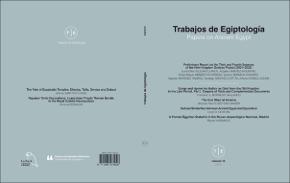Cultural Similarities between Ancient Egypt and Byzantium
Author
Graham, Lloyd D.Date
2022Abstract
This paper is intended as a joint tribute to the scholarship of Egyptologist Erik Hornung and Byzantinist Cyril Mango, both of whom recently passed away. Byzantine traits with obvious parallels in ancient Egyptian culture abound in Cyril Mango’s introduction to The Oxford History of Byzantium, and yet –both there and elsewhere– one looks in vain for an overt acknowledgment that these two very different civilizations nevertheless shared a distinctive cluster of characteristics. Drawing on Hornung’s Idea Into Image as a starting point for Egyptological insights, this paper seeks to establish such a correspondence. Shared features of the two cultures include their self-belief, theocratic disposition, bureaucracy, longevity, feigned immutability, preoccupation with order, dynastic tendency, temporal focus, ritualism and artistic conventions, as well as aspects of their kingship paradigms, afterlife anxieties and relative periodisation. The observed similarities point to a nexus of specific principles, behaviours and outcomes – components which tend to co-occur as a group in complex human societies. Este artículo pretende ser un homenaje conjunto a la erudición del egiptólogo Erik Hornung y del bizantinista Cyril Mango, ambos recientemente fallecidos. En la introducción de Cyril Mango a The Oxford History of Byzantium abundan los rasgos bizantinos con evidentes paralelismos en la antigua cultura egipcia, y sin embargo -tanto allí como en otros lugares- se busca en vano un reconocimiento manifiesto de que estas dos civilizaciones tan diferentes compartían, no obstante, un conjunto de características distintivas. Basándose en la obra de Hornung Idea Into Image como punto de partida para las reflexiones egiptológicas, este artículo trata de establecer dicha correspondencia. Entre los rasgos comunes de ambas culturas se encuentran la fe en sí mismas, el talante teocrático, la burocracia, la longevidad, la inmutabilidad fingida, la preocupación por el orden, la tendencia dinástica, el enfoque temporal, el ritualismo y las convenciones artísticas, así como aspectos de sus paradigmas de realeza, preocupación por el Más Allá y periodización relativa. Las similitudes observadas apuntan a un nexo de principios, comportamientos y resultados específicos, componentes que tienden a coincidir como grupo en las sociedades humanas complejas.





